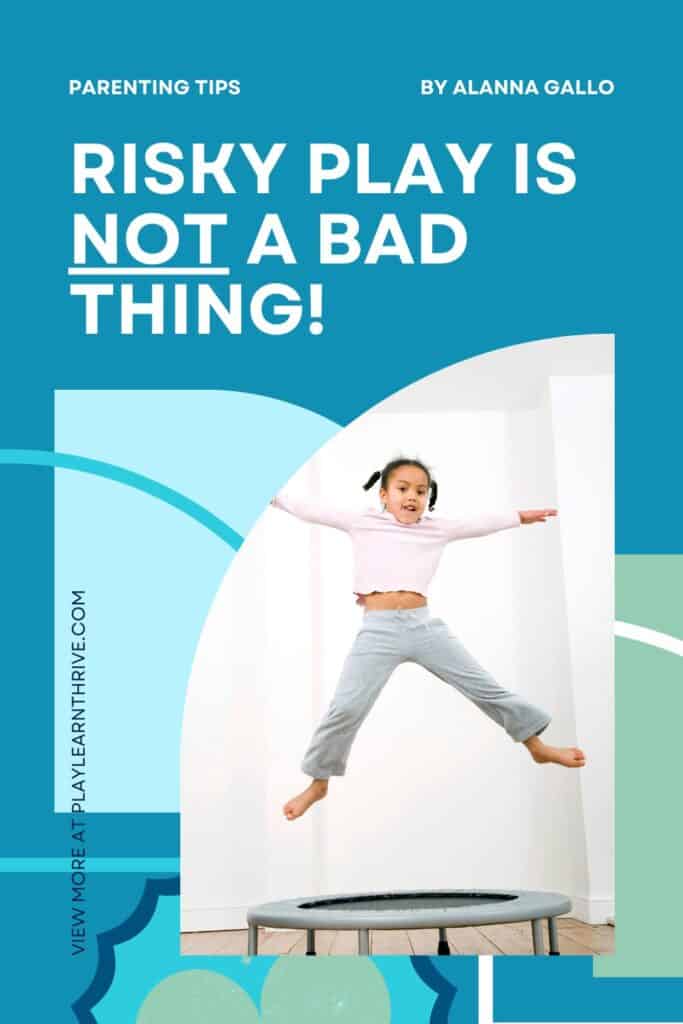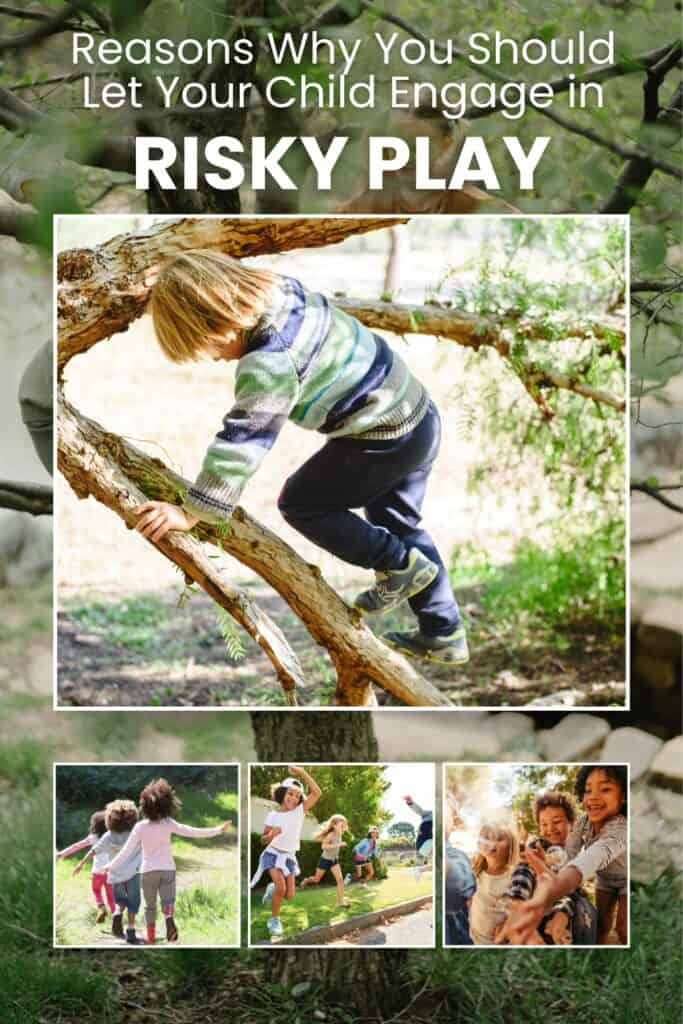Risky Play: Why It’s Essential for Your Child’s Growth and Development
In today’s world of hyper-vigilant parenting, risky play has become a rarity. Yet, the very experiences many of us had as kids—climbing trees, racing down steep hills, or jumping off playground equipment—are exactly what children need to build confidence, resilience, and essential life skills.
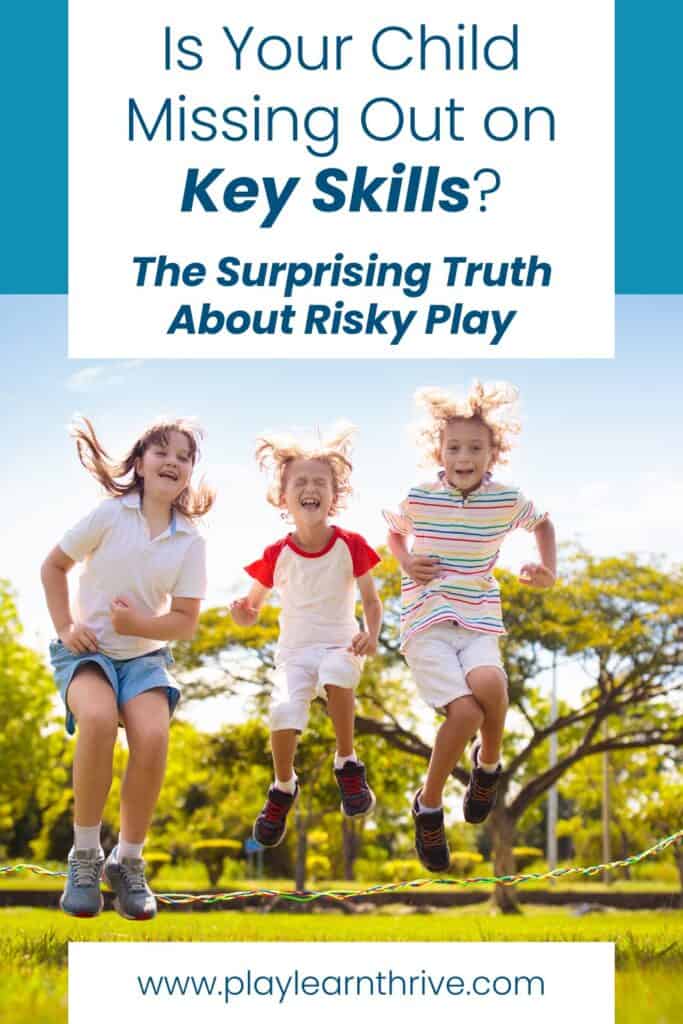
Play. Learn. Thrive.™ only endorses products we authentically love and use. Some of the product links in this post may be affiliate links. That means that if you click them and make a purchase, this site makes a commission. Play. Learn. Thrive.™ is also an Amazon Associate. As an Amazon Associate, we earn from qualifying purchases. It will have no impact on the price you pay or the experience of your purchase.
Welcome back to my blog, where we our mission is to help YOU raise confident and lifelong learners. I’m Alanna Gallo, a former teacher with a master’s in education who saw firsthand how kids were losing confidence, independence, and their natural love of learning.

I left the classroom to help parents raise curious, capable, and screen-conscious kids in a world that doesn’t make it easy. My work has been featured in major media outlets, and I’m here to give you real, research-backed advice—without the guilt trips or unrealistic expectations.
If the idea of risky play makes you nervous, you’re not alone. But here’s the truth: children need risk. It’s how they learn to navigate challenges, assess danger, and develop a healthy sense of independence. When we remove all risk, we unintentionally increase anxiety, diminish confidence, and limit their ability to handle real-world challenges.
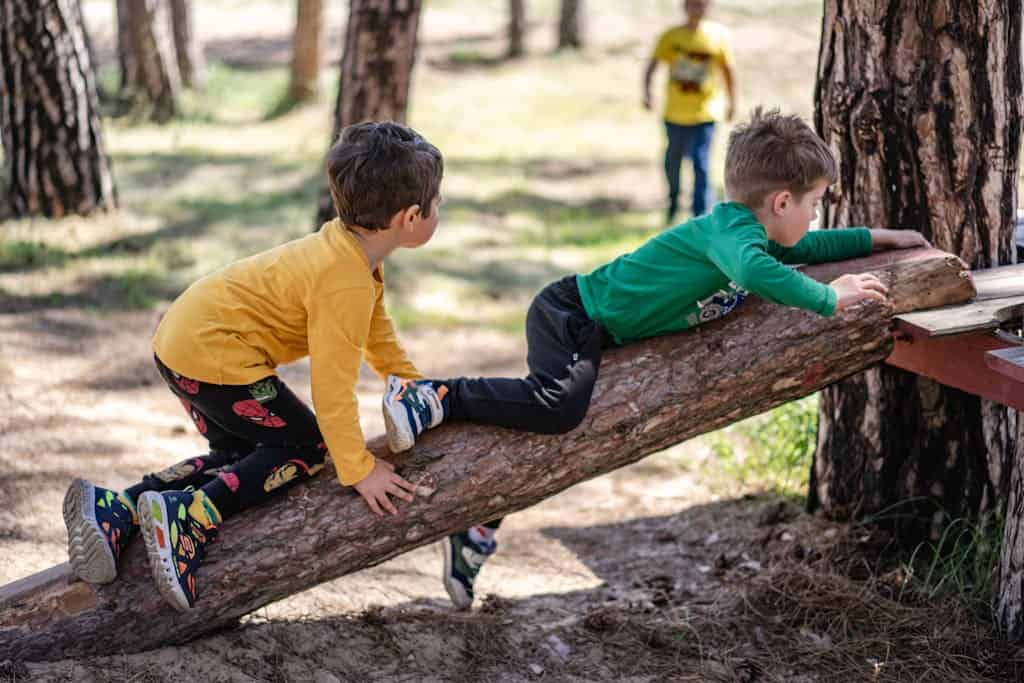
What is Risky Play?
Risky play isn't the same as reckless or dangerous play. Instead, it’s play that allows children to test their limits in a safe and developmentally appropriate way. It includes activities that have elements of uncertainty, challenge, and physical risk but within a reasonable scope where children can learn self-regulation.
Common examples of risky play include:
- Climbing and balancing – scaling playground structures, climbing trees, or balancing on logs.
- Running at high speeds – dashing across open fields, engaging in chase games.
- Exploring heights – jumping from one surface to another, playing on uneven terrain.
- Using objects in unconventional ways – rolling down hills, sliding headfirst, climbing up instead of down.
- Rough-and-tumble play – friendly wrestling, pretend sword fighting, or playful tackling.
- Independently exploring natural spaces – wading into a creek, navigating a forest, or building forts with found materials.
What’s missing from risky play? Adults micromanaging. When given space and freedom, children naturally adjust their level of risk to match their abilities. When we intervene too often, we rob them of this crucial learning process.

Why Risky Play is Disappearing
Many parents today feel pressure to keep their kids as safe as possible, at all costs—but at what cost to their growth?
Compared to previous generations, today’s children are engaging in significantly less unstructured outdoor play and far fewer experiences that involve risk. The reasons are understandable:
- Overprotective parenting fueled by societal fear.
- More screen time replacing active, physical play.
- Fewer natural play spaces as urbanization increases.
- Schools and playgrounds minimizing physical risk due to liability concerns.
But as Dr. Peter Gray highlights in Free to Learn, this decline in risky, independent play has directly correlated with increased childhood anxiety, depression, and lack of resilience. When kids don’t have opportunities to push their boundaries through play, they struggle to handle challenges later in life.

50 Simple Screen-Free Learning Activities for Curious Kids
These 50 hands-on activities help children develop problem-solving skills, creativity, and real-world knowledge—without needing a screen. Designed to encourage self-directed play, hands-on discovery, and deep learning, this guide gives you a simple way to turn everyday moments into powerful learning opportunities.
The Research Behind Risky Play
Several studies confirm that risky play is essential for healthy development. According to researchers like Dr. Mariana Brussoni, engaging in moderate risk-taking in childhood:
- Improves physical coordination and strength
- Enhances problem-solving and critical thinking skills
- Develops self-confidence and emotional resilience
- Reduces long-term fears and anxiety by allowing children to confront manageable risks
- Encourages creativity and imaginative play
Brussoni’s work suggests that children who are restricted from risky play become more fearful and less capable of handling risk as they grow. The best way to develop sound judgment? Let kids experience real risks in controlled ways while they’re young.
The Problem with Overprotective Parenting
If you’ve ever hovered nervously while your child climbed the playground ladder or instinctively shouted, “Be careful!” every five minutes, you’re not alone.
We all want to protect our kids. But when we remove all risk, we also remove opportunities for growth. Instead of building competence, overprotection leads to:
- Increased fear and anxiety
- More frequent injuries due to lack of physical experience
- Lower confidence and reduced problem-solving skills
- Difficulty handling real-world challenges later in life
Ironically, kids who engage in risky play are often safer in the long run because they learn how to assess and manage risk on their own.
How to Encourage Risky Play (Without Losing Your Mind)
If the thought of risky play makes you uneasy, start small. Here’s how to create a healthy balance between freedom and safety:
1. Shift Your Mindset
Instead of seeing risky play as something dangerous, view it as a critical part of development. Remind yourself: It’s okay for kids to fall. It’s okay for them to struggle. This is how they grow.
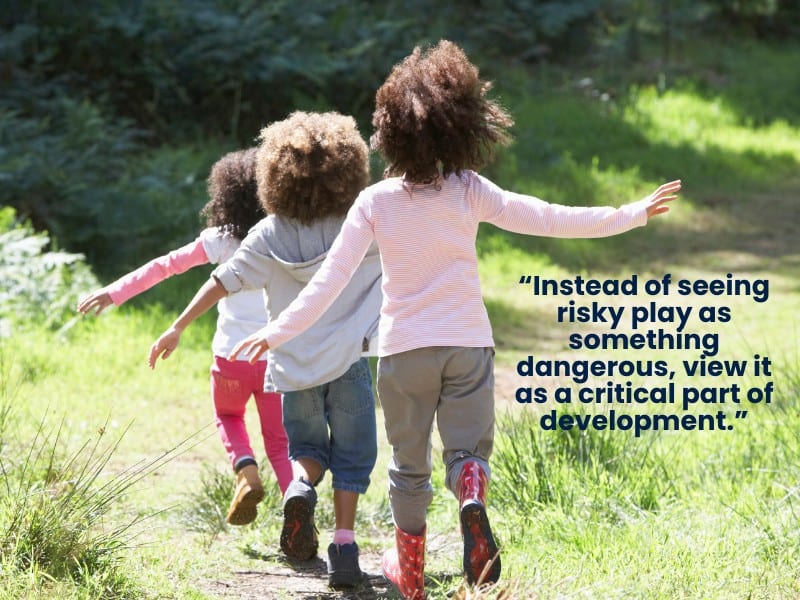
2. Set Boundaries, Not Limits
Allow your child to explore freely within reasonable safety parameters. Instead of saying, Don’t climb that tree, try Make sure you can get down safely before climbing higher.
3. Encourage Outdoor Free Play
Nature is the perfect environment for risky play. Climbing rocks, balancing on logs, and running through uneven terrain naturally help kids develop agility, coordination, and confidence.
4. Let Go of Constant Supervision
Give your child space to play without intervention. If they stumble, wait before rushing in—watch how they problem-solve on their own.
5. Model a Healthy Relationship with Risk
If you avoid challenges, your child will too. Show them that taking risks is a normal and healthy part of life.
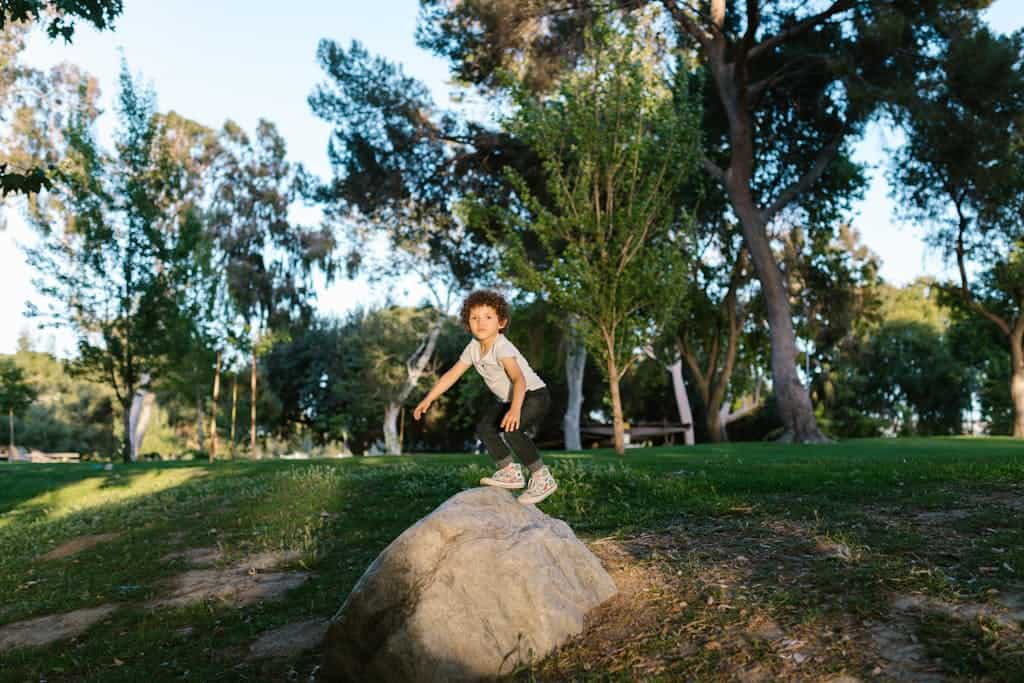
The Long-Term Benefits of Risky Play
Risky play isn’t just about childhood fun—it’s about preparing kids for real life. When children are allowed to test their limits, they become: ✔ More confident and resilient
✔ Better problem-solvers
✔ Less anxious and fearful
✔ Physically stronger and more agile
✔ Better equipped to handle risks and challenges as they grow
As parents, it’s natural to want to protect our kids. But true protection isn’t about removing every obstacle—it’s about teaching them how to navigate challenges with confidence.
So, take a deep breath. Step back. Let your child climb, jump, explore, and experience the thrill of risky play. It’s one of the best gifts you can give them.
Inspired by this post? Be sure to subscribe download my free Screen-Free Starter Kit! For more insights and resources on raising confident, lifelong learners, be sure to follow me on Instagram – can't wait for you to join me!


